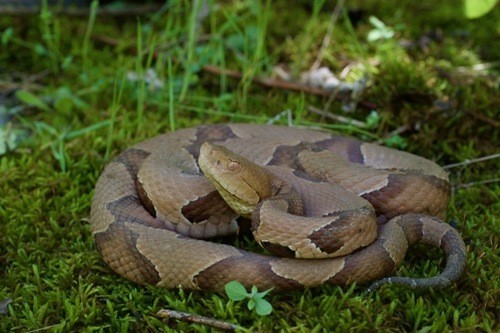Agkistrodon contortrix phaeogaster
A species of Moccasins Scientific name : Agkistrodon contortrix phaeogaster Genus : Moccasins
Agkistrodon contortrix phaeogaster, A species of Moccasins
Scientific name: Agkistrodon contortrix phaeogaster
Genus: Moccasins
Content
Description General Info
 Photo By sullivanribbit , used under CC-BY-NC-4.0 /Cropped and compressed from original
Photo By sullivanribbit , used under CC-BY-NC-4.0 /Cropped and compressed from original Description
Agkistrodon contortrix phaeogaster is characterized by its unique fossorial lifestyle, mainly burrowing underground in search of prey and shelter -- a testament to its adroit adaptation amongst the more adverse environmental conditions. It's fascinating how this snake employs a 'sit-and-wait' approach for hunting, further aided by its heat-sensitive pits for detecting warm-blooded prey. Notably, agkistrodon contortrix phaeogaster's role as a natural pest control, particularly towards rodent populations, underscores its vital ecological contribution.
General Info
Lifespan
10-25 years
Diet
Agkistrodon contortrix phaeogaster demonstrates a carnivorous diet pattern, predominantly comprised of small mammals like rodents and birds. The species utilizes ambush hunting techniques, relying heavily on their hemotoxic venom to subdue prey.
Appearance
Agkistrodon contortrix phaeogaster is a medium-sized snake with a robust, stout body covered in keeled scales. It displays a vibrant mix of copper, brown, and orange hues, with darker, hourglass-shaped crossbands spanning its length. Younger individuals may feature more vibrant colors, while adults tend towards a darker palette. The snake's distinguishing features include a broad, triangle-shaped head and, at times, a rattle at the end of its tail.
Behavior
Agkistrodon contortrix phaeogaster is a solitary reptile with nocturnal activity patterns, often employing ambush strategies to catch its prey. This species exhibits conspicuous sexual dimorphism in foraging behavior, with females tending to actively hunt more frequently than males. Territorial disputes typically involve non-lethal combat. This species shows considerable adaptation for survival in various habitats, including camouflage within leaf litter or undergrowth.